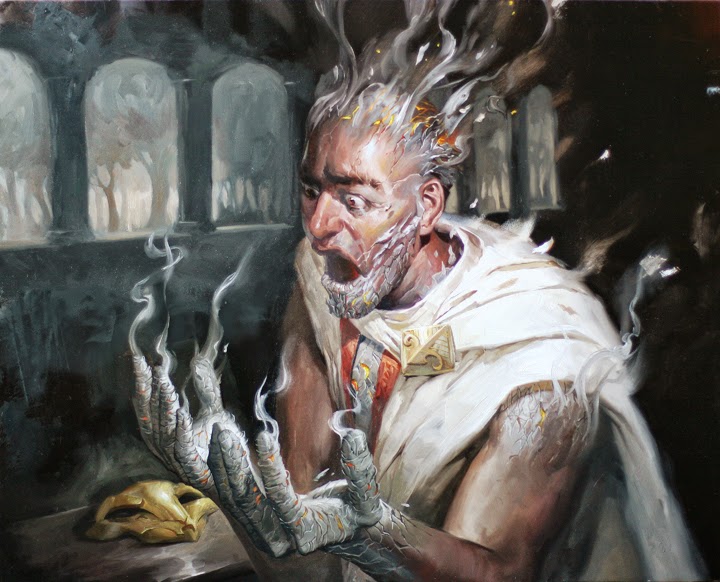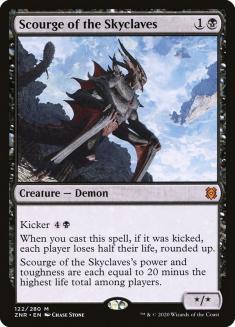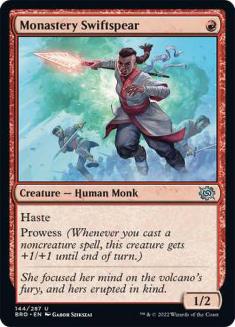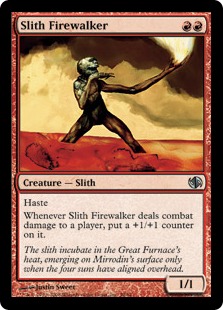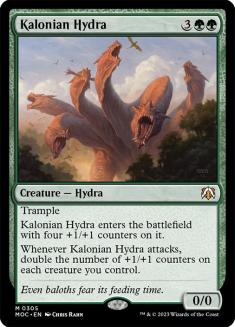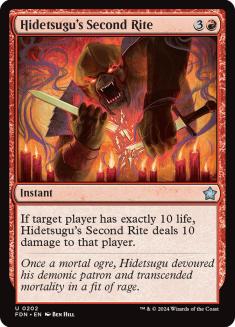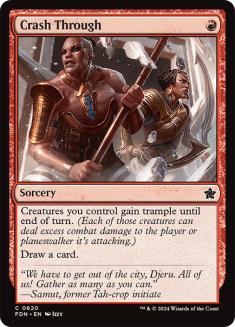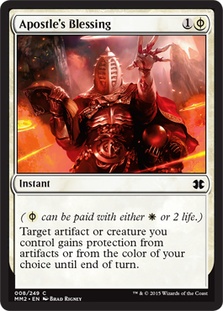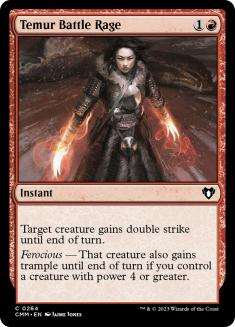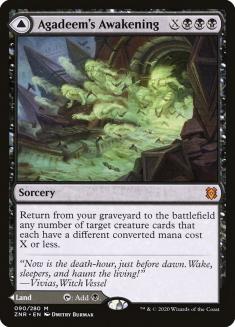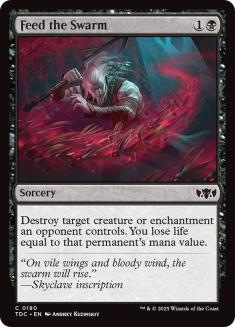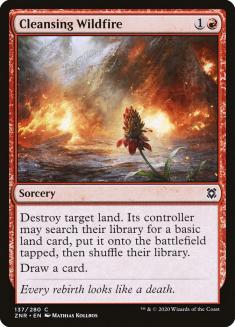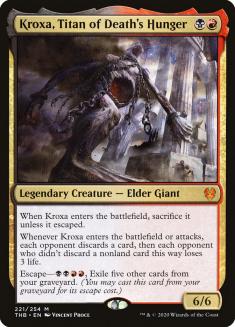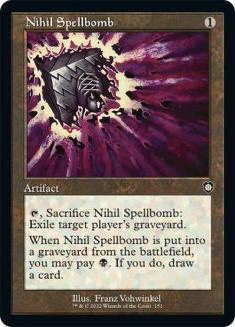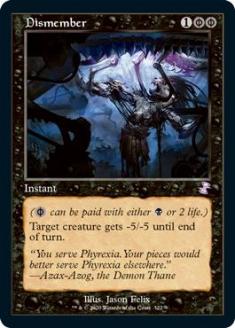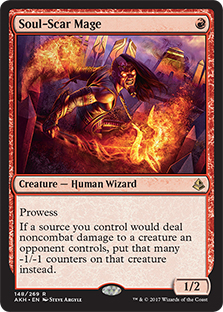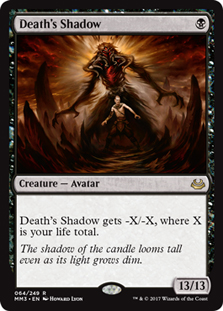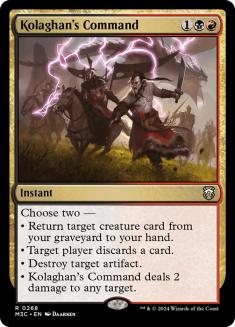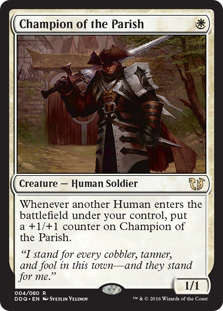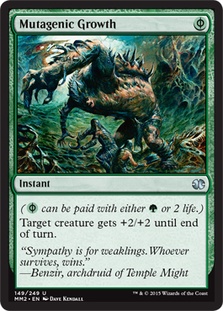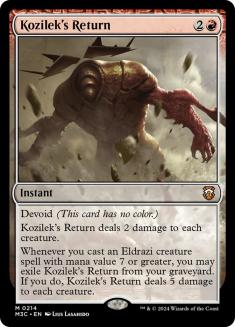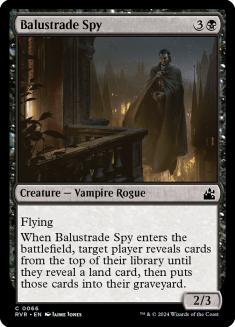Two months ago, I wrote about how much I was enjoying Jund Death’s Shadow that features prowess one-drops.
Creatures (16)
Lands (17)
Spells (27)

Today, I’m happy to say Zendikar Rising ended any debate or uncertainty in the Thoughtseize-and-threats macro-archetype. The spiritual successor to that Jund deck is now clearly both the best Thoughtseize deck in Modern and clearly the best Monastery Swiftspear deck in Modern.
It’s just Rakdos Death’s Shadow these days. With Scourge of the Skyclaves you just don’t need to play green any more. There were literally seven or eight green cards in the entire deck, and once you look at the almost-direct replacements Zendikar Rising offers in Rakdos you’re basically debating a green splash for sideboard Veil of Summer. That card is pretty stupid, but in a deck full of red and black one-drops, maximizing the odds you can have all your colors and double-red, double-black for maximum spell flexibility off two lands is better.
Like I said, the principles here are the same as they were with the aggressive Jund Death’s Shadow lists. The whole “low land count, good single threat, cantrips, draw more spells” thing Grixis Death’s Shadow based its dominance around in 2017 just doesn’t work any more with 2020 cards and the London Mulligan impacting Modern. You need to actually kill your opponent, and this deck certainly does that.
All the changes, both card choice and gameplay, are fallout from Scourge of the Skyclaves, which is just an inherently complicated card. Coming from the lineage of managing your life total with Death’s Shadow, I’m not sure what anyone looking at the card expected. Let’s just dive right into what playing with this card means.
The most obvious difference is you need to deal your opponent damage to enable Scourge of the Skyclaves, whereas you can cast Death’s Shadow and donk your opponent up if life totals are their twenty to your one. Technically you also need to deal damage to yourself, but that is way easier. You don’t deal two damage to your opponent while casting Thoughtseize. The prowess one-drops that were just fine enough to play before are now critical parts of the deck, since them dealing the first few damage puts Scourge of the Skyclaves right into efficient threat range.
The fact that they are one-drops is also critical due to a play pattern you might recognize from Modern Burn: the classic “fetch, shock, Lightning Bolt your Goblin Guide to save damage but still go to seventeen life” line. Your opponent is forced to take notable damage to answer your Turn 1 threat or take notable damage if they don’t, which means your Monastery Swiftspear simply existing in your opening hand is the assured damage you need to set up Scourge.
Dealing damage to set up your best Scourges also applies to Scourge of the Skyclaves dealing damage to your opponent after you stick it. A pretty common scenario is being able to cast a 3/3 Scourge of the Skyclaves after your opponent fetches up a shockland and falls to seventeen life. If that Scourge connects, it becomes a 6/6 as long as you are at fourteen, which is trivial. For comparison that’s two life before you can even think about casting Death’s Shadow, so literally effortless.
Even your small Scourges clock as if they had five or six power to start. Aside from thinking about dodging Lightning Bolt, there are no “3/4 Tarmogoyf is a bad clock” problems.
The final part: if both players are at ten life or less, Scourge one-shots your opponent. It’s pretty simple math: twenty minus a number ten or less is always greater than or equal to that number. Getting someone to ten is not that hard. When your prowess creatures go uncontested, this happens extremely early even when you don’t draw tons of spells to trigger them. Getting yourself to ten is a joke.
The card makes your deck snowball exceptionally quickly into lethal attacks while still being disruptive. Think of the role Affinity with Mox Opal played in Modern a couple of years back, but there isn’t a Stony Silence to crush your hopes and dreams. It is everything I loved about Kiln Fiend in the older lists, but it isn’t a 1/2 and is a great topdeck.
All the changes to this deck from the Jund list prioritize pushing your clock harder. Lava Dart over Seal of Fire implies Lurrus of the Dream-Den is even more of a backup plan compared to just getting another prowess trigger early at the cost of a land. Apostle’s Blessing replaces Inquisition of Kozilek since you want your Turn 1 play to be a prowess attacker more than interaction.
Crash Through replaces Cling to Dust since exiling Uro, Titan of Nature’s Wrath to gain life is an absolute non-starter, though I wouldn’t be shocked if Crash Through was eventually cut since it’s fairly low-impact here. Maybe we just go back to old-school Cremate or full-power Soul-Guide Lantern or something. Just don’t play Street Wraith because it’s 2020 and we have better things to do like Lurrus and the London Mulligan when Scourge doesn’t need that much life loss.
While Lightning Bolt and Temur Battle Rage have remained constant, the texture of them in the deck has changed. There are a lot more Lightning Bolt-as-Lava Spike games to get Scourge going or to push it over the lethal edge on a key attack. The increased focus on prowess also means you are going to target a smaller creature with Temur Battle Rage more often and need to think more in terms of a red deck extracting damage value from your cards.
Drawing Temur Battle Rage while your only creatures are prowess one-drops is fairly common, and when that happens you should be considering how you can get more than just the four extra damage from Temur Battle Rage from something like Lightning Bolt into Temur Battle Rage. Once you draw Battle Rage and control a prowess creature, you should be thinking about precisely timing your Mishra’s Baubles and Lava Dart flashbacks.
Since Mishra’s Bauble is a slow cantrip, that sometimes means you get the most from your cards if you Temur Battle Rage a turn before you’re expecting lethal. You will then have the best of both worlds on Mishra’s Bauble — the extra prowess trigger on your creature on the Temur Battle Rage turn and the card drawn to flex your plays the most on a turn where you are actively attacking.
Agadeem’s Awakening isn’t that important; it’s just nice. The life loss from playing it as an untapped land is the same as fetching a Blood Crypt and it’s a comical amount of mana to use in a deck with seventeen other lands including Sunbaked Canyon, but it’s still better than not playing one.
The real secondary gains from Zendikar Rising are in the sideboard. If Scourge replacing Tarmogoyf was the first reason to cut green, getting full card type coverage without playing Assassin’s Trophy was the second. Cleansing Wildfire is just the perfect prowess card against Urza’s Tower, landing before the critical Turn 3 Tron window and replacing itself as a spell. Feed the Swarm’s enchantment rider is way more than an incidental bonus with a huge increase in Leyline of Sanctity and Slippery Bogle even winning a tournament this year.
Since your second big threat isn’t graveyard-centric with the swap away from Tarmogoyf, your only exposure to graveyard hate like Soul-Guide Lantern is Lurrus. That gives your opponents less reason to sideboard them in as an exploit and gives you more reason to explore alternative threats on that axis. Kroxa, Titan of Death’s Hunger isn’t quite Uro, Titan of Nature’s Wrath, but it’s still a really powerful card that takes over attrition-based matchups.
The Matchups
The list I would recommend is along the lines of what yamakiller played recently:
Creatures (16)
Lands (17)
Spells (27)

I’m going to link my recent Jund Death’s Shadow article again since most of the matchups are extremely similar. Rather than retread all the details, I’m going to point out the ones that have major updates.
VS Four-Color Control
You may notice the name update here, and that’s the biggest change going on. Omanth, Locus of Creation is the new hotness in this format as well, and even if the lifegain sounds like the big issue, the actual problem is more likely the white spells that come with it. Path to Exile and sideboard Celestial Purge make Death’s Shadow and Scourge of the Skyclaves significantly less stable than you would expect. You should be looking for really pushy, multiple-threat hands that can play through removal. They have also moved over to more planeswalkers named Teferi as the way to use Omnath mana, which means staying ahead on the battlefield with multiple threats is that much more important.
Out:
In:
Upgrade your cantrips, keep Lava Dart to maintain the pressure, and fiddle a bit with your removal so more of it hits Uro as opposed to more of it being well-suited to killing Omnath in response to the cantrip trigger. There honestly isn’t a ton you can do here besides pressure their graveyard to mitigate Mystic Sanctuary and Uro, but do that as well as you can and you should win a decent amount.
VS Death’s Shadow Mirrors
It really feels like the red-based prowess decks and Thoughtseize decks have formally condensed into this deck in the last week or two. The Rakdos Death’s Shadow mirror is a bit about the big doofuses and a bit about stealing games from abbreviated life totals with your prowess threats. Fatal Push is your best card if you draw it, and you should save it until you get a massive advantage from it or get to kill one of the black creatures.
Soul-Scar Mage’s ability also comes up, allowing Lava Dart or Lightning Bolt to for sure kill an opposing prowess creature after they commit to triggers. I don’t know the best way to describe when you want to go for Lurrus, but it falls somewhere between “make it convenient” and “get something significant out of it.”
Out:
The Nihil Spellbomb here is preemptive mitigation of their Kroxas. If somehow you know they aren’t going down that road, you can omit it. I’m also unsure if the second Kolaghan’s Command is too clunky since it isn’t assured to be a time relevant two-for-one, but the cards you are taking out aren’t great.
I’m normally solidly on the side of Thoughtseize still being great in Thoughtseize mirrors, but there just isn’t a value permanent you have to answer before it resolves here. There’s no Dark Confidant to handle or set up, there are no planeswalkers, and the Lurrus is tucked away in their sideboard. Honestly, leaving any Thoughtseizes in your deck might just be wrong and Lava Dart might just be the low-impact card you want.
VS Humans
I think people have finally admitted they should just be playing Humans instead of nonsense decks like Elementals or… I guess no one can save the Orzhov Death and Taxes players at this point. Having a faster clock in Scourge of the Skyclaves and having Lava Dart are huge upgrades from the Jund list, as is having more flexibility in fetching basics.
Out:
In:
Your goals in cutting cards in this matchup are to mitigate drawing cards that don’t trade off or brawl; mitigate drawing too many spells against Thalia, Guardian of Thraben; and not end up with double Thoughtseize draws that get tempo buried when your opponent inevitably has redundant cheap cards. Instead you have cards that kill things. High level maneuvers going on here.
VS Oops All Spells
Being able to Thoughtseize lands is literally everything I dreamed of, and the things my lived dreams were made of. That’s all I got. Even if they are fairly resilient to discard, buying a turn or two is more than enough for Scourge of the Skyclaves to end things.
Also, did I mention that even if they draw two copies of Balustrade Spy you can just Thoughtseize their mana? I’m unsure if it feels better to do that in real life and get to see the disgust on their face, or if you just get to cackle for a socially unacceptable amount of time behind your keyboard at home.
Out:
In:
Cleansing Wildfire cleanly kills their lands since they can’t really put a basic land in their deck to find. If they have maniac sideboarded into a Mountain and a Goblin Charbelcher, you may want to move back to Crash Through in those slots.
Feed the Swarm might seem weird if you’re cutting your maindeck removal, but the enchantment part of that card comes in clutch here. Leyline of Sanctity is crucial to cutting off some of your faster kills and disruption, and if you unload a Lightning Bolt or Thoughtseize on Turn 3 after firing a Feed at their Leyline, it is largely just as good as it would be earlier. Keep this in mind for any other matchup where a Leyline might be prevalent.
The Real Deal
When one of the previous best decks in Modern gets significantly better, you’d better take notice. The days of many decks that relied on the Death’s Shadow clock being a bit slower than peak Modern performance are all officially warned their days of good strategic positioning are numbered. Even as people adjust to answers that are better against Scourge of the Skyclaves, I expect Rakdos Death’s Shadow to maintain a strong presence in the Modern format.

